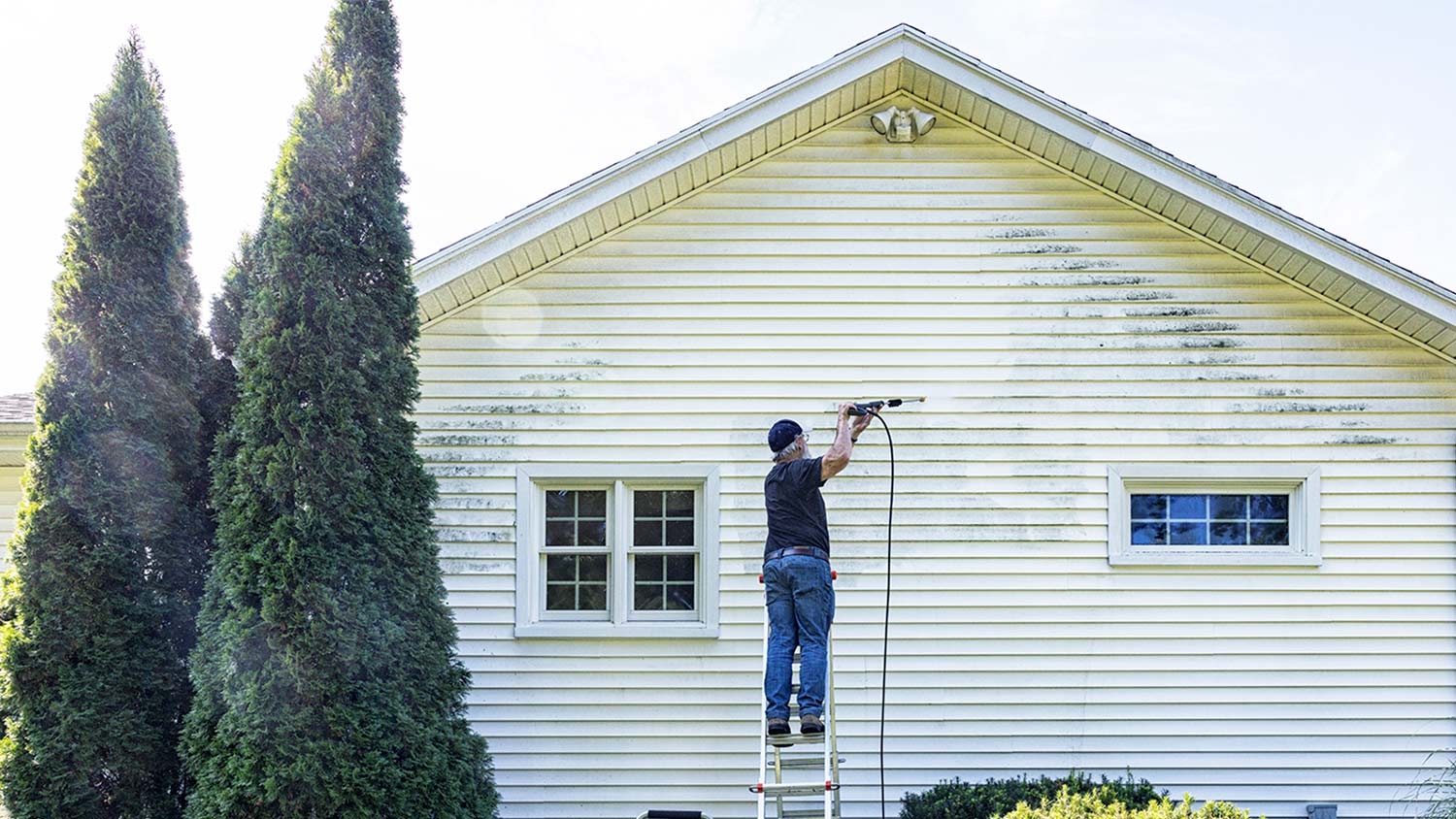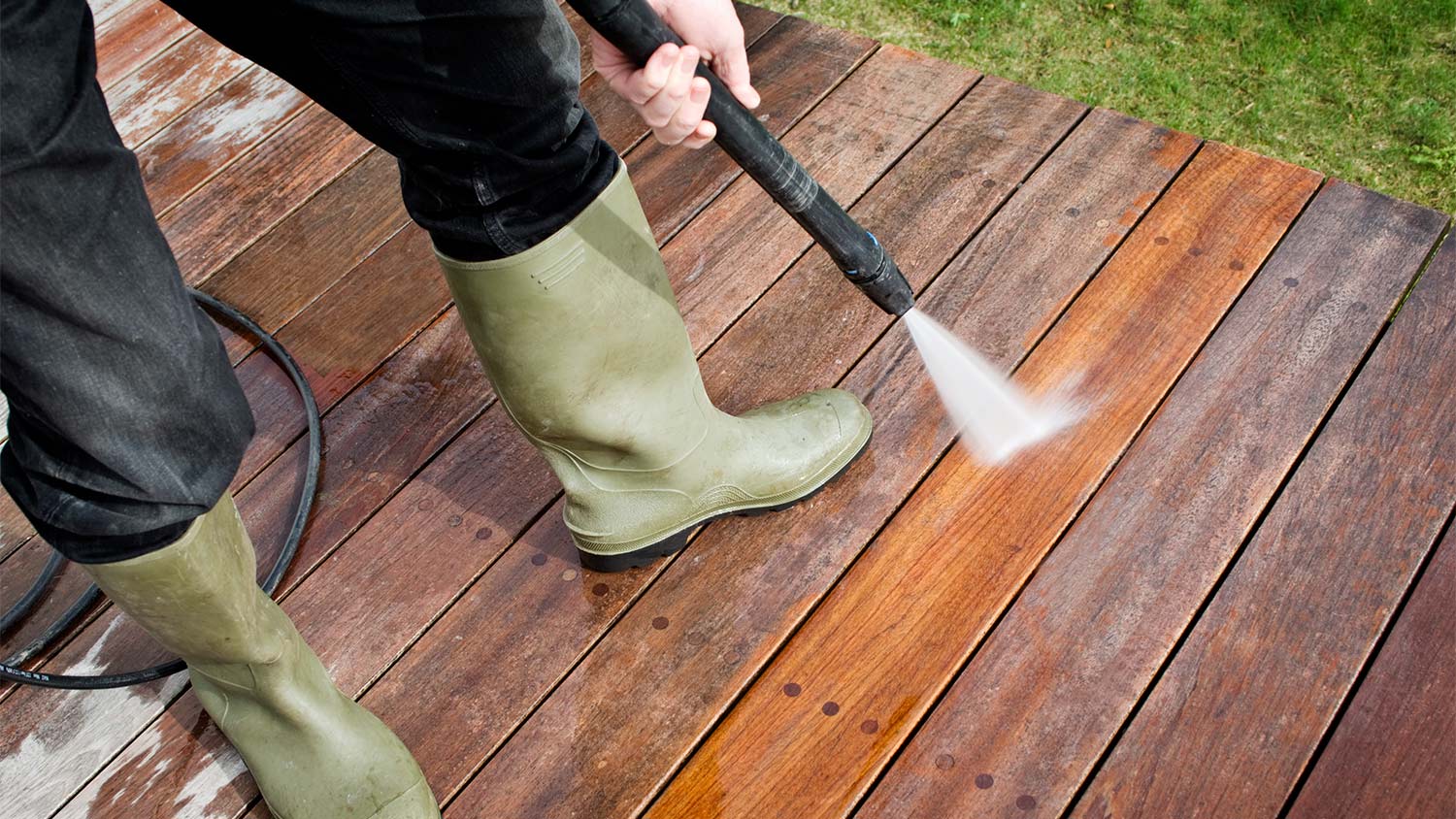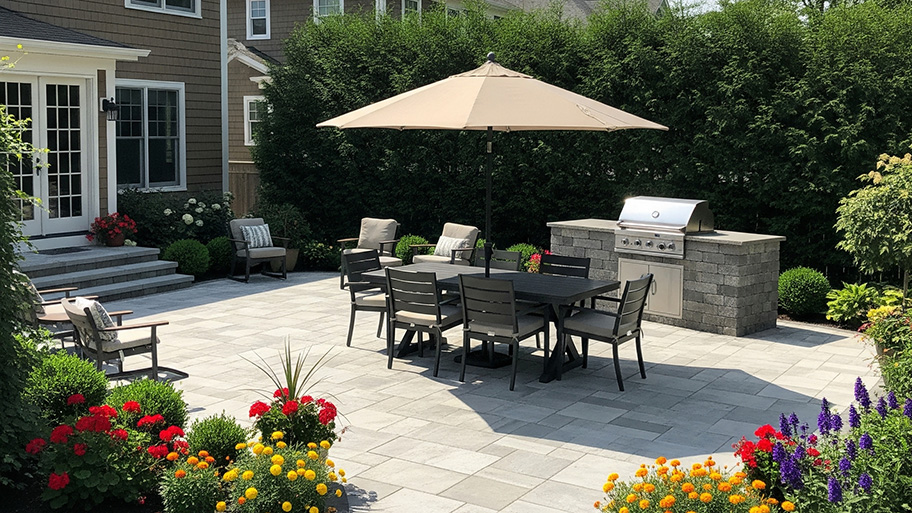
Pressure washing your fence can restore its appearance and keep your home looking great. Learn how much it costs based on factors like square footage and material.
Any of these mishaps could lead to costly repairs


Pressure washers are useful tools for handy DIYers. They are great for tidying up after messy chores, performing some serious spring cleaning, and prepping for renovations. But regardless of the various pressure washer uses, these machines are extremely powerful and a small mistake can lead to property damage or even personal injury. Here are some common pressure washing mistakes and how to avoid them.
It may feel like a water gun, but a pressure washer is a professional piece of equipment and not a toy. It can discharge water at several thousand pounds of pressure per square inch, making it a potential danger to exterior fixtures and human bodies. That’s why it’s so important to wear protective gear when operating a pressure washer.
Start with safety glasses, but don’t forget close-toed shoes that won’t slip on a wet surface. Depending on how powerful your washer is, consider donning a protective suit and a helmet with a face shield. Better safe than sorry, right?
Keep your eyes on the pressure gauge and start low and slow. Using too much pressure leads to property damage, as the water stream can splinter wood, punch holes in siding, crack concrete, and more.
Pressure is measured in PSI (pounds per square inch), which indicates the force of the water, and GPM (gallons per minute), which measures the water flow. For delicate surfaces like wood or vinyl siding, start with a PSI under 1,500 and adjust cautiously. For tougher jobs, like cleaning concrete, you can go higher, but you should still ensure the PSI and GPM are appropriate for the task.
Generally speaking, the lowest pressure setting that gets the job done is the one you want. This takes some experimentation, but always start on the lowest setting and use caution when making adjustments.

Everyone has to start somewhere, but you need some experience with a pressure washer before letting loose to protect yourself and your property. If you are an absolute beginner, thoroughly read the instructions and watch some tutorial videos that relate to your specific make and model. If you’ve opted not to hire a local pressure washer, give your machine a whirl in a safe environment further into your yard and away from home fixtures. Practice slowly and methodically until you are relatively sure you can control the stream of water without any issues. This also helps when troubleshooting problems with your pressure washer.
When it comes to pressure washing, it’s all in the angle. You never want to approach a surface head-on, as this only drives the dirt deeper into any available nooks and crannies. Going at an angle, however, helps lift the grime and push it away from the surface. This method is especially important when cleaning porous materials like wood and concrete.
Also, experiment with different angles if the dirt is giving you a hard time. Try moving the spray head around to get that all-important angled scoop to remove the grime. Just don’t angle upwards toward the siding, as this damages the fragile exterior component.

Become familiar with the various nozzles available to your pressure washer, as choosing the correct nozzle for the job helps increase both safety and efficiency. Nozzles impact the distribution of pressure emanating from the device, and certain jobs require specific nozzles. For instance, never use a narrow nozzle when washing windows, painted surfaces, or delicate materials because this can cause damage. Instead, go with a wider nozzle that decreases focused pressure. When in doubt, do a test run with a bit of scrap material.
This is a big one. Try not to leave your pressure washer idle for more than a few moments or so. For instance, if you get a phone call, shut the machine off until ready to start again. Most machines are designed to redirect water back into the system when not in use. Over time, this drastically increases the temperature of the interior components, leading to damage. This is not a huge deal if your model boasts temperature-resistant ceramic-lined parts, but that feature is typically reserved for high-end and expensive models.
Plants and foliage don’t exactly love high-powered streams of water, so protect your landscaping with a tarp. You should also give your plants a rinse with a standard hose afterward to remove any cleaning solution that trickled down to your flower bed. Also, remember to cover up any fixtures like AC units and electrical outlets.

Water by itself is not always the best choice for a pressure washer—for stubborn stains, add an appropriate cleaning agent. Water alone may simply push dirt and grime further into recesses instead of cleaning the area. Every washer is different, so consult the instructions to find the best cleaning solution for your make and model. Some pressure washers work with detergents, while others recommend spraying the area with an eco-friendly cleanser on your own prior to washing. We can’t say it enough: Read the manual before starting.
Gas-powered washers are more powerful than corded electric models, making them a great choice when performing renovations without access to electricity. However, these machines create massive amounts of carbon monoxide during use. So, never use a gas-powered pressure washer indoors.
Frankly, it’s a rare case when it’s recommended that you use even an electric model inside. Most indoor fixtures don’t need anything as heavy-duty as a pressure washer to get clean, and then there’s the question of where the runoff water is meant to go. Stay on the safe side and just use manual washing indoors.
Unless you’re looking to get rid of the paint, never use a pressure washer on a painted surface. Paint, especially when it has been exposed to sunlight, can crack, peel, and otherwise become damaged under the power of a pressure washer. The same is applied to stains, fiber cement siding, old mortar, bricks, and gutters.
Pressure washing a surface with a cleaning solution can be a way to remove mold and mildew, but some materials—such as drywall or fabric—won’t be able to dry out quickly enough before mold makes a home in them. Only pressure wash materials that can dry completely after the wash.
Some commercial pressure washers use hot water to get exteriors cleaned faster, but residential building exteriors are not typically as durable as commercial ones. For instance, if you have vinyl siding or cedar shingles, you could damage them when using hot water for your pressure washing.
Assuming you’re renting the machine as opposed to buying it, DIY pressure washing is less expensive than hiring a professional—the rental will run you between $35 and $175 per day while hiring a professional to pressure wash your home costs between $100 to $1,800, depending on the scope of the project and the size of your home. That said, pressure washing can be a dangerous task if you don't know what you’re doing and don’t take the proper safety precautions. In addition, improper pressure washing can cause damage to your home, creating a much more expensive problem. When in doubt, hire a professional power washer to tackle your cleaning project.
From average costs to expert advice, get all the answers you need to get your job done.

Pressure washing your fence can restore its appearance and keep your home looking great. Learn how much it costs based on factors like square footage and material.

Pressure washers can help you keep your home looking great. Use this guide to learn how much it costs to rent a pressure washer based on factors like type and time.

The cost to pressure wash a patio depends on the size of the surface and the type of patio you have, as well as whether you DIY or hire a pressure washing pro.

So you want to hire someone to power wash your deck but don’t know who to call? We’ll help you find the right pro for the job.

Who power washes houses? Hiring a power washing professional is the best choice, as this expert has the know-how and equipment to do the job correctly.

Safely pressure wash your shower or bathtub without damaging your caulking, fixtures, and tiles. Choose the best nozzle and equipment for your needs.